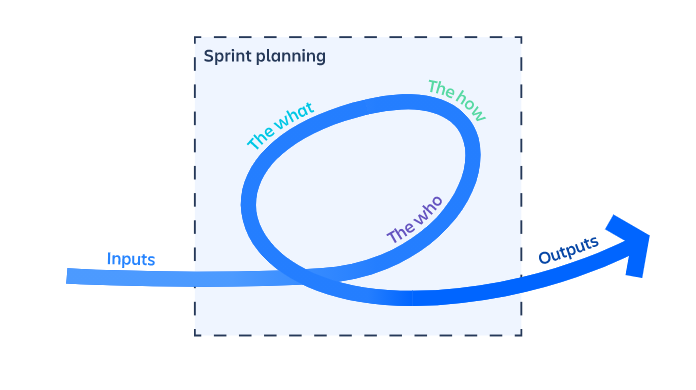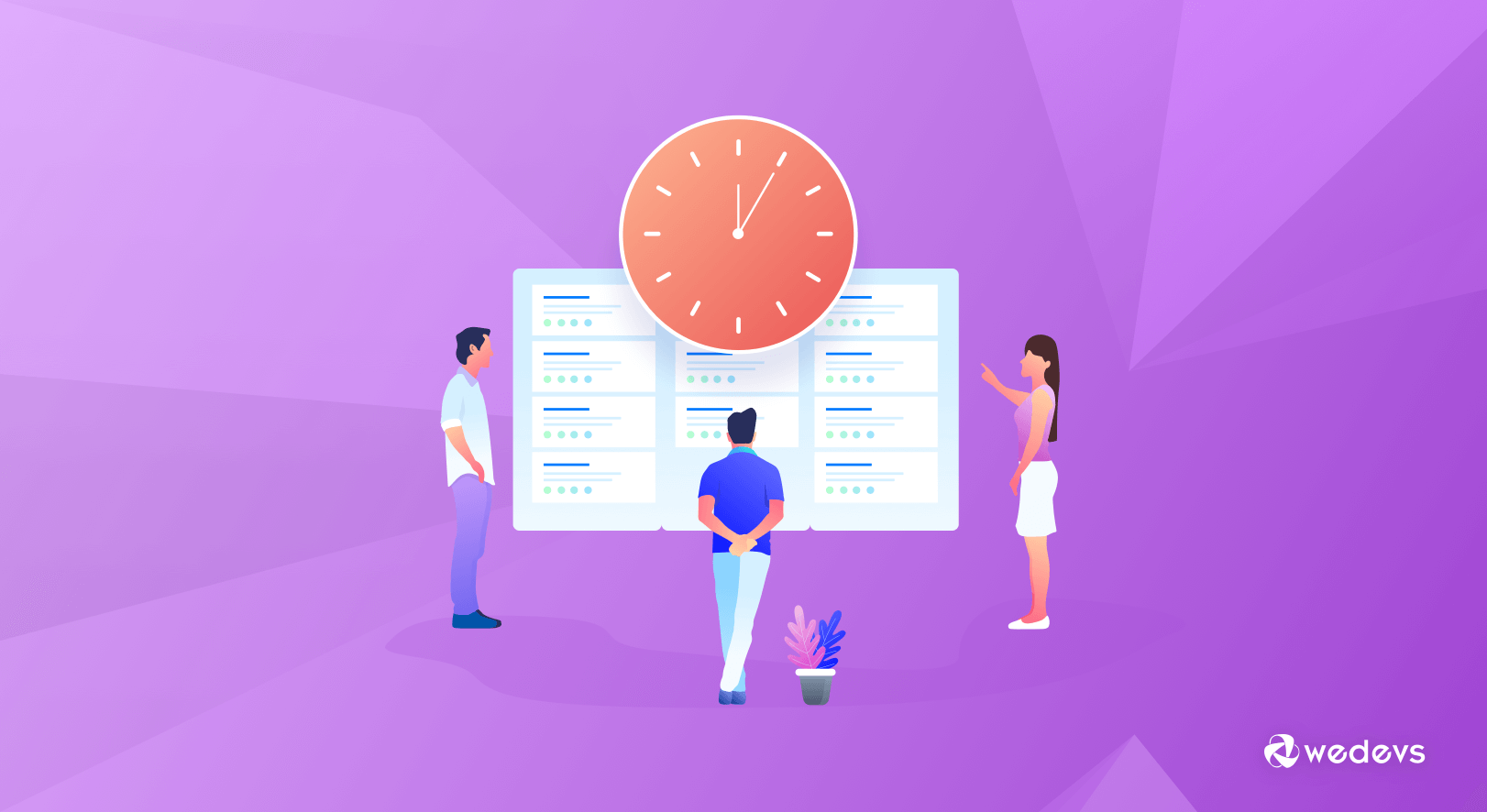
How to Conduct a Sprint Planning Meeting to Ensure Your Business Success
Have you ever wondered how to make your team more productive? Especially while the entire world is fighting back against the pandemic, as a project owner it may frustrate you how to keep your teams stay organized and productive.
Luckily, there are several project management tools to save your back. Agile is one of the most popular approaches to project management. Currently, it becomes a top choice for many project managers because of its flexibility and evolutionary nature.
According to the Project Management Institute, more than 70% of organizations have incorporated an Agile approach, and Agile projects are 28% more successful than traditional projects.
An important ceremony in Agile Scrum is the “Sprint Planning Meeting“. The overall success or failure of a project largely depends on this pre-management convention. Use this guide to conduct a successful sprint planning ceremony for your next project.
Before going any further, let's review some terminology that we will use in this article. It helps you to understand the basics of Sprint Planning-
Product Backlog: A detailed description of product requirements that need to be updated. It includes new features, changes to existing features, bug fixes, infrastructure setups, and others.
Sprint Backlog: A list of the product backlog items that the team commits to execute during the current sprint. Along with the list of tasks required to delivering those product backlog items.
Story: It describes the description of a product feature from an end-user perspective. For example, as a customer, you want to register on the website, so that you can browse the products easily on the site.
Team's Velocity: Measure the amount of work a Team can manage during a single Sprint. This is the key metric in Scrum.
What is a Sprint Planning Meeting in Agile Methodology

A sprint planning meeting is an event where the entire team sits together to set the sprint goal and plan the roadmap to achieve that goal depending on the team's review of its product backlog.
To clarify things better, sprint is one timeboxed iteration of a continuous development cycle. Within a sprint, the team must complete a certain amount of work and make them ready for review. And “Sprint Planning Meeting” is the starting point, conducted by the scrum master.
Attendees: development team, scrum master, product owner
When: At the start of a sprint.
Duration: Generally an hour per week of iteration. Like two hours for a two-week sprint.
Agile Framework: Scrum.
Purpose: The main purpose of sprint planning is to define-
- what can be delivered in the upcoming sprint
- how that work will be achieved
Remember, a bad sprint plan can off-track your team by setting unrealistic expectations.
Benefits of Sprint Planning Meeting
- Allows the team members to agree on the sprint goal and commitment
- Enables task discovery, sign up, prioritization and estimation
- Creates the platform to communicate dependencies
- Identifies team capacity to set & commit to an achievable sprint goal.
What Happens in a Sprint Planning Meeting?

The product owner explains the sprint goal and the team together decides the working procedure to achieve that goal. The scrum team also discusses how to increase product value and utility in the current sprint.
Also, negotiate which items from the product backlog will be committed to the sprint backlog. Other important facts are also considered here e.g. the estimation, limitations, capacity, risk, dependencies, and timeline.
Who Attends the Sprint Planning Meeting?
Usually, the entire team participates in this Sprint Planning Meeting
Product Owner: Identify the candidate product backlog items and define their relative priorities, along with the sprint goal.
Scrum Master: Ensure that the sprint goal is achievable and everything goes through a proper channel. Also, check whether the appropriate product backlog items are included in the sprint backlog.
Team members: Decide how many of the product backlog items they can complete in the defined time frame. And how to deliver those product backlog items.
Sometimes, additional parties can be invited to the meeting by any attendees in order to provide new business or technology domain information and advice. But their role is limited to share this information only.
What is the Input to the Sprint Planning Meeting?
The input to the Sprint Planning Meeting is the Product Backlog including a list of “items” that might be completed during the sprint. The team should also look at the latest product Increment, projected capacity of the development team for this sprint, and past performance of the development team.
What is the Output to the Sprint Planning Meeting?
The major output for the sprint planning meeting is that team members can explain the goal of the sprint and clearly know how they will start working to acquire that goal. All these include in the sprint backlog.
How to Do Sprint Planning?
At first, the scrum master defines the sprint goal. Then the development team plans the steps necessary to achieve that goal. Actually, the sprint plan is made up with the mutual consent of the development team and product owner considering value and effort.

When does It Happen?
Sprint planning meeting takes place at the beginning of a sprint cycle. Suppose, you are doing a monthly-based sprint, you can call for a meeting on every 1st day of the month (or any other date you choose to start on).
How Long Should It Take?
Usually, it takes a maximum of eight hours for a one-month Sprint. For the shorter sprints, meeting time will also be reduced. As a thumb rule, to identify the ideal sprint meeting length you can multiply the number of weeks in your sprint by two hours.
1 Week Sprint = 2 Hours
2 Week Sprint = 4 Hours
3 Week Sprint = 6 Hours
4 Week Sprint = 8 Hours
Note that it is the maximum time allotted. An experienced scrum team will take lesser time than this. The scrum master ensures that the meeting must be completed within this timebox. And any unnecessary conversation is avoided.
Preparation Work before Meeting

We've already specified the roles of every attendee in the sprint meeting. Let's explain what they should assemble before attend the Sprint Planning Meeting:
For Scrum Master:
- Prepares and publishes agenda
- Assign the right team members & schedule meetings at a suitable time
- Make sure the team members have the skills required to complete the backlog items successfully
- Calculate available capacity for the team (team members holidays, public holidays, etc)
- Identify the teams' velocity vs the amount of work committed by the team in the previous sprint
- Arrange enough sticky notes, pens, markers, whiteboard, etc.
For Product Owner:
- Define each user story item in detail
- Provides detailed requirements and acceptance criteria
- Keep backlog is in priority order
- Describe the definition of “done” for each user story in the current sprint
- Ensure each feature or user story is small enough to be completed within a sprint
For Development Team:
- Ensure personal availability for the coming sprint
- Prepare questions to clarify any doubts and avoid confusion
- Update the team's definition of “done” if required and keep the reference ready to describe during the meeting.
How To Run A Sprint Planning Meeting
You can split this meeting into two sessions. In the first session, the product owner describes the list of features that needs to be done during the sprint. The next session is about the identification of tasks that should be performed to build those features.
Sprint Planning Meeting – Part I

In this part of the discussion, the product owner will describe what s/he actually wants to make ready by the end of the sprint.
In concern of that, all the product backlog items will be reviewed by the team members. And select the items that can commit to delivering a Potentially Shippable Product Increment (PSPI) within the allotted timeframe.
The Team can make suggestions, but the final decision of what Product Backlog will be added into the upcoming sprint backlog will come from the product owner. S/He will determine how much of the product backlog the team will attempt to do during the Sprint.
Team members can ask questions to clarify their doubts and dismiss all ambiguities. Since they have to demonstrate the final output as they agreed on during the sprint review meeting in front of the Product Owner and stakeholders. It will occur at the end of the sprint.
By the end of this segment, the Product Owner and the development team together finalize the objective of the sprint.
The key activities of Part I of Sprint Planning are:
- The product owner presents the priority of the Product Backlog item to the team
- Sets a sprint goal: a one-sentence description of the final outcome of the sprint.
- The team together identifies the product functionality that can be delivered in the upcoming Sprint.
- The team commits to the selected Product Backlog at the end of this session
Sprint Planning Meeting – Part II
The second segment occurs immediately after the first segment of the sprint planning meeting. It has the same time-boxed similar to the first part. It means if the total time span for the meeting is 8 hours then it will be equally divided into each segment- e.g. to conduct 8 hours meeting you have 4 hours to complete the first part of the meeting and the rest of the 4 for the second part.
In this part, the product owner must attend to all the questions that the team might have about the Product Backlog. Then the team will decide how to turn the selected Product Backlog into an increment of potentially shippable product functionality.
The product owner must be available during this meeting but not necessarily present in the room. Even if the PO does remain in the room, yet the Scrum Master should take charge of this part of the meeting. So the development team can focus on their work and explore possibilities without being limited by the product owner's opinions or ideas.
There should be enough space for the team to discuss different possibilities and solutions to acquire the final goal having no external influence. The product owner and Scrum master will observe everything and answer questions seeking further information.
By the end of this segment, a list of tasks should be ready which is called the Sprint Backlog including task estimations, and assignments. Depending on this the team will start developing the functionality.
The key activities of Part II of Sprint Planning are:
- Detail planning- Breakdown stories into tasks so the team members can make actionable plans to complete these stories
- Estimating of the stories- Do deep analyzing and applying strategies like Planning Poker or T-Shirt Sizing. It enables them to approximate the time each task will take to complete.
- Final Outcome- The team defines the workflow to meet the sprint goal as a form of Sprint Backlog
A sprint planning meeting mainly deals with two things-
Sprint goal: Agree on what will be delivered at the end of the sprint.
Sprint backlog: A prioritized set of user stories, enhancements, bugs, tasks, and sub-tasks for the next sprint to keep the team focused.
Best Practices for Sprint Planning Meeting in Agile Methodology
Here are the best practices for an agile sprint planning meeting to get the maximum output-
- Create a recursive calendar invitation including all team members
- Product Owner should send the meeting invitation to the team members
- Include agenda in the invitation plus the user stories link which should be included in the sprint
- Add more user stories in the sprint than the team's capacity. As it might be possible that some of the user stories get rejected by the team while you might have the confidence
- Make your proposed user story elaborative and easily understandable. Attach all the use cases, functional requirements, and levels of satisfaction in-depth, at least, discuss once with some senior team members
- Define new issues, possibilities, impacts, and dependencies
- Appreciate or reward top-performing team members from the last sprint. It encourages others to improve their performance in the future
- Treat your team with something they like to have, at least offer tea/coffee. Sometimes a small feast motivates them to work faster.
Also Read: A Comprehensive Guide to Waterfall Methodology in Project Management.
Sprint Planning Meeting Rules In Agile Methodology (In a Nutshell)
- All the team members including the product owner and scrum master must be present at the meeting
- The scrum master will conduct the sprint planning meeting and get the highest authority
- Scrum master serves as the timekeeper, leader, facilitator, and coordinator of the agile sprint planning meeting
- The product owner's role in sprint planning meetings is only as a contributor. S/he has the responsibility to clarify all the things answering team members' questions if they have any and explain the user stories to the team.
Are you looking to implement Agile project management to streamline your product development process?
Check out all the key details of a Useful Agile Management Tool that focuses on continuous releases & incorporating customer feedback with every iteration.
Conclusion
As the name describes “Sprint Planning” in agile methodology, here all the team members are involved in a detailed and open conversation to ensure the item they will perform in the upcoming sprint.
It's a simple concept to accelerate your workflow following some pre-defined rules. So that all the team members can synchronize their works in a planned manner and complete them successfully. The main objective of the Sprint Planning Meeting is to set the Sprint goal and find the optimal way to achieve that goal.
Initiating a sprint planning meeting in order to-
- Plan for the meeting considering- who, what, when, and where
- Review the product backlog and identify the list of product backlogs that the team is supposed to complete in the upcoming sprint
- Make sure your team's capacity is enough to manage the proposed workload
- Establish velocity for your team- the amount of work your team intend to complete during the Sprint
So, how do you prepare yourself for a sprint planning meeting? Share your queries, obstacles, and experience with us in the comment section below!
